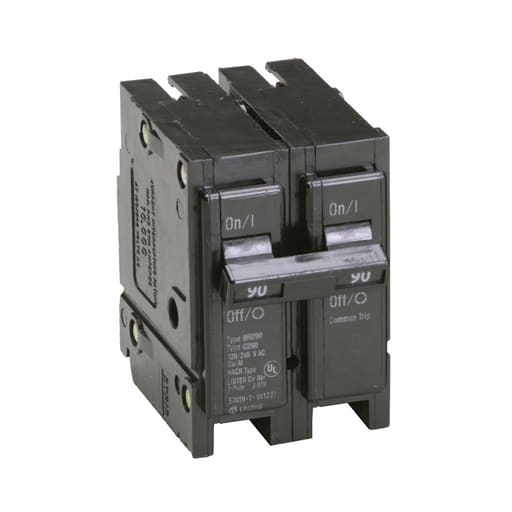Cutler-Hammer / Eaton - Eaton Electrical BR290 1 Inch Plug-On Circuit Breaker

Login or create an account to check prices & order
Essential specifications
12-Digit UPC - 786676363204
Amperage - 90 Amp
Applications - For Residential and Light Commercial
Catalog Number - BR290
Conductor Size - 8-1/0 AWG
Packaging
1 ea
EAN
00786676363204
Part #
281985
Catalog #
BR290
Commercial reference
BR290
12-Digit UPC:
786676363204
Amperage:
90 Amp
Applications:
For Residential and Light Commercial
Catalog Number:
BR290
Conductor Size:
8-1/0 AWG
ERP_productname:
CUT BR290 TYPE BR BREAKER 90A/2 POLE 120/240V 10K
Family Brand Name:
Cutler-Hammer Manufacturing Co.
Heights:
2-1/2 Inch
Interrupt Rating:
10 kAIC
Length:
2 Inch
Mounting Type:
Plug-On
Number of Poles:
2 Pole
Trip Type:
Common Breaker, Thermal Magnetic, Long Time and Instantaneous
Type:
Type BR
Voltage:
120/240 Volt
Widths:
2.9 in
Wire Size:
8-0 AWG
SoneparProductId:
SKU_US_57840274



